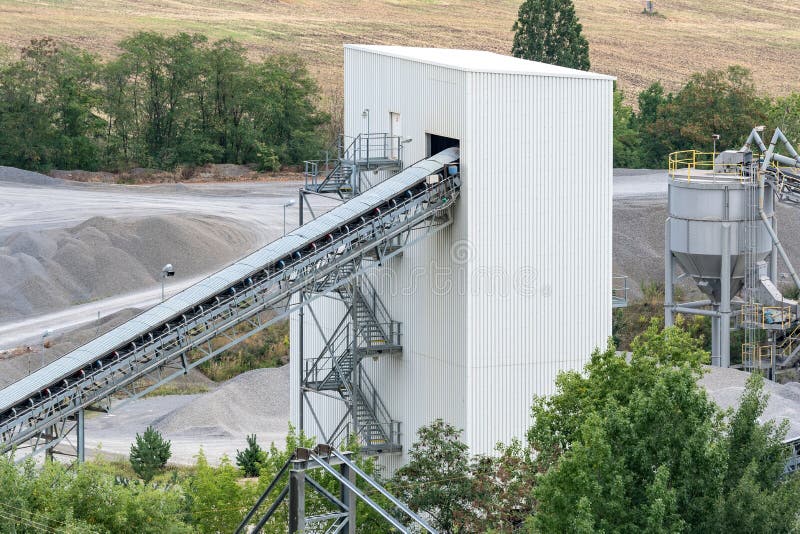Overland Conveyors Fundamentals Explained
Table of ContentsAll about Overland ConveyorsSome Known Details About Overland Conveyors Some Of Overland Conveyors3 Simple Techniques For Overland ConveyorsThe Buzz on Overland Conveyors
Belt Conveyors Belt conveyors are the most usual and also easiest form of conveyor and can have variable rates. They have a moving belt that relaxes on a steel frame that sustains the belt as well as the materials being moved. Ones that have a supporting frame underneath are described as sliding design.If a gravity roller conveyor is tilted or placed on an angle, materials move by gravity. Pieces of varying dimensions can be packed on a gravity roller conveyor, workers need to be careful of larger materials running right into smaller ones.
Chain Conveyors Chain conveyors can have 2 or numerous sets of chains that make call with the bottom of products to be moved. The products remainder on the chains as they are relocated. Chain driven conveyors are suitable for products with unequal bottom surfaces or ones that are very heavy.
As a result of the kinds of products chain conveyors move, they run extremely slowly. Motorized Roller Conveyors Motorized roller conveyors make use of electric motors, positioned along the conveyor frame, to power evenly spaced rollers (Overland Conveyors). The design is comparable to a gravity conveyor with the addition of electric motors. The variety of electric motors depends on the tons to be relocated and the general layout of the system.
Not known Incorrect Statements About Overland Conveyors
In some systems, there is a sensor that starts and also stops the motor to prevent items getting loaded together. Slat Conveyors Slat conveyors have the exact same layout as chain conveyors with flat slats attached to the chain. Somehow, they resemble belt conveyors with slats replacing the belt.
The unit safeguards the track from wear as well as makes it easier to put bends as well as contours in the system. Open Up Track Conveyors - Open track conveyors do not cover the track as well as use I beams as the track. They are simple to mount as well as ideal for lengthy straight configurations. Chain Expenses Conveyors - Chain expenses conveyors make use of a constant powered chain that runs along a track.
In various other layouts where pendants are not utilized, pusher dogs may be utilized to relocate trolleys along a 2nd track placed below the chain track. This type of system is referred to as power and complimentary. Monorail Conveyors Monorail communicating systems have service providers to relocate products and also are optimal for usage over cross countries.
Monorail conveyors use the room over the production area. In some styles, the service providers lower to the degree of production and also then increase, out of the way. Power as well as Free Conveyors Power as well as cost-free sharing systems are created to move components through the manufacturing and setting up process.
An Unbiased View of Overland Conveyors

Upside down Conveyors Inverted conveyors are floor placed as well as can be made use of as power as well as complimentary conveyors. They normally have a drive system that does not include a belt or chain. Paternoster Conveyors Paternoster conveyors are a vertical communicating system that makes use of equivalent spaced lots carriers linked to a chain drive, which relocates a constant loop.
Chute Conveyors Chute conveyors have a smooth level surface area made of wood, metal, or plastic that is set on an angle in a frame, which can be directly, website here spiral, or circular. Things are moved down the surface - Overland Conveyors. Screw Conveyors Screw conveyors are utilized to relocate mass compounds such as granular products, chips, and loose materials.
The chain can flexing along the straight axis allowing it to make horizontal turns as well as can making upright curves. The various kinds of weaves a COE makes allows it to be extra flexible than typical chain driven conveyors. Skid Conveyor Skid conveyors are one more kind of floor mounted conveyor that moves items on fixtures that have actually longitudinal joggers called skids with traveling being longitudinally and also transversely.
Overland Conveyors - The Facts
Skid conveyor systems are valued for the effectiveness and silent setting of transportation. The variants in skid conveyor systems are due to the lots of components and control systems that helpful resources can be included. Rubbing Conveying System A rubbing communicating system uses an electric motor to drive a friction wheel constructed from non metallic product to create driving pressure.
Rubbing sharing systems are a risk-free choice to power and complimentary systems with the major benefit of running cleaner as well as quieter. They have a versatile format, device building and construction, simple speed transforming, can easily be increased, and also low overall price. The major objective for rubbing communicating systems is to aid with procedures that have a high manufacturing price.

When the system is in location, its inner operations end up being a facility moving process that is important to the effectiveness as well as success of a procedure. How a Conveyor System Works To restrict the conversation of communicating systems, the details listed below concentrates on belt conveying systems because they are one of the most usual.
When the motor is activated, the belt is pulled between the sheaves. Support group: The support group allows the belt to relocate efficiently. It is specifically developed to hold the moving product without sagging. In the design phase, the weight capacity of the framework is figured out and the frame is created to check my reference fulfill the requirements of the procedure.
Overland Conveyors Fundamentals Explained
In in between them are idler or dummy pulley-blocks that are relocated by the belt. The drive pulley-block presses or draws the lots, while the tail pulley-block returns the belt. As can be seen in the diagram, idler pulley-blocks offer a variety of functions in guiding the belt, that include managing its tension.